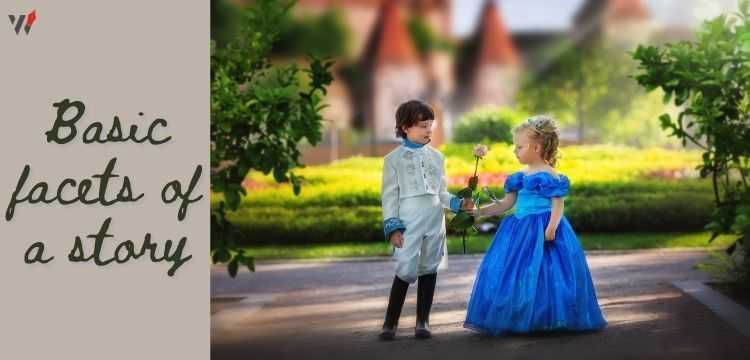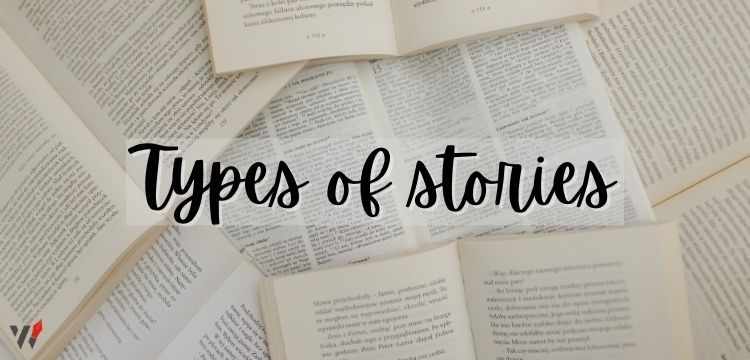Writing is a difficult skill to master. Furthermore, writing stories is significantly more difficult. We are all storytellers and are surrounded by stories. Let’s get some basics clear on what is story writing.
Have a great story in mind and wish to structure it into a good story? Interest, patience, and a clear knowledge of what story writing entails, and practice, can provide excellent outcomes.
Stories have been a part of our human experience since prehistoric times when they were recounted around fires and drawn on cave walls. But what is story writing? And how do you write a coherent one?
What is story writing?
Before we attempt to define what is story writing let’s first discuss what exactly is a story. A story is a depiction of a voyage. In a story, we follow a character or a group of characters on a journey as they attempt to accomplish something while encountering various hurdles.
Back to the first question- What is story writing?

Story writing is a type of fictional writing that is done in a more straightforward manner and has its own natural flow. Character (crucially a Protagonist and Antagonist), Setting, Plot, Conflict, and Theme are the five aspects of story writing. Story writing templates often have all these designed and thus make it easier.
Through story writing, you share the experience of characters in a physical setting with a plot that makes it story-worthy, a conflict that causes a riff or relationship core of the characters, and finally the theme of the story as in what the story wants to share.
Read in more details about story writing here : 5 Powerful Writing Techniques That Bring Stories to Life
Basic facets of a story

Have you ever wondered what makes a great story? Great stories feature suspenseful surprises, likable characters, evocative descriptions, and long-lasting impacts. Writing a story is not bounded in a particular format. However, there exists a basic structure that you can follow.
The structure aids in the construction of a comprehensible story. To ensure a good flow of your narrative, you must follow the essentials when writing a story. As previously mentioned, there are five key aspects to consider when writing a story.
Your narrative can be the next bestseller if you plan it around these elements and execute it well.
Character
Your story will be more fascinating if your characters are relatable and interesting. To create great characters you should understand the character types and traits.
Character types
- Protagonist (hero/heroine)
- Antagonist(villain)
- Dynamic character(that changes at the end)
- Static character(that remains the same throughout)
Character traits are nothing more than your character’s personality. How they respond to situations, how they deal with challenges, and how they live. Character qualities are vital in a good story. They assist the reader to understand the character’s thinking and motivations.
Plot
Since our academic years, we have known the fundamental framework of any form of writing. Introduction, body, and conclusion. The plot is where the actual narration of the story happens. Proficient stories usually have a simple storyline but manage to surprise the reader with plot twists that keep the reader engaged.
Standard plot structure consists of five parts
- Exposition: Here, the character and setting of the story is introduced
- Rising Action: Things transpires; the characters are confronted with a difficulty or a crisis.
- Climax: The most thrilling and pivotal section of a story
- Falling Action: Subsequent events as a result of the climax
- Resolution: The point at which a conflict is ended and a character changes.
Setting-
The setting of a story refers to the location and timeframe of the story’s events. What characters do, how the plot progresses, and how the reader relates to the story can all be impacted by the setting.
Conflict-
This is where the choices of the protagonist and the antagonist collides. Without a conflict, a story is null. There are different types of conflicts in different stories. However, there are two broad categories of conflicts.
- External Conflict- An external conflict exists between a character and something else. This conflict can happen between the protagonist and another character, antagonist, nature, society, fate, etc. During the story’s mounting action or climax, he or she must settle this issue.
- Internal Conflict- This type of conflict takes place within the character’s inner self. It can be anything like fear or anxiety or insecurities and many more. Internal conflict must be resolved in order for the character to progress effectively.
- Theme- You can start looking for a story’s theme once you’ve identified the plot, setting, characters, and conflict. The story’s “big concept” or underlying lesson about life is called the theme. It can be a single word or a lengthier statement that encapsulates what a story is trying to express.
- Point Of View- An additional element that holds an important place while writing a story is the POV. The standpoint from which a narrative is perceived is referred to as a point of view. The primary character’s point of view isn’t necessarily theirs, even though the story focuses on them.
First-person: In the first person point of view, the narration is done by a character(mostly the main lead). The character speaks using the ‘I’ perspective in first person POV.
Second person: The second person point of view uses the ‘you’ perspective. This viewpoint is less prevalent than first-person or third-person viewpoints.
Third-person: The third-person point of view tells a story that is happening to other people. A narrator can be ubiquitous, wherein they are aware of all events and characters. Or the narrator can be limited in which they are aware of few events or characters.
Types of stories

We got a clear understanding of what is story writing followed by standard story structure. Writing a story is broken into three divisions. Let’s have a look at the three contemporary types of story writing.
Short stories
Typically, a short story is 1000-5000 words. Magazines, newspapers, and anthologies all publish short stories. Short stories demand a small cast of characters and not more than one main lead.
Avoid adding long time frames. Short stories should always have one single plot. However, you can add subplots to longer short stories. A short story is a type of fiction under 20,000 words. Short story writing needs a beginning, middle, and end.
Short story templates online can make it more simple and less time-consuming. Try out short story templates initially and get your hands on them!
Novels
A typical novel is mostly 80,000 or 1,50,000 words. However, the word count also depends on the genre. Novels give the writer a broader space to put the story across. Novels call for a long cast of characters. You can include multiple subplots and longer time frames.
A novel can have more than one leads. Short story writing and novel writing are different forms.
A novel is a work of fiction of at least 60,000 words. Shorter books are called novellas. Novels are far more popular with readers than short stories.
Life stories
What is a life story? Life stories are biographies and autobiographies and are true stories. Biography is when you write about someone else. Autobiography is when you write about yourself. Biographies and autobiographies are lengthwise similar to novels.
For the reader, a life story must be compelling and exciting. Don’t offer tedious details simply because they’re “true” — the reader doesn’t need to know everything that occurred. Many times, the facts of a child’s or adolescent’s life may be summed up – or recounted in a few vividly depicted situations.
Tips you should consider while writing a story
There’s always space for progress in whatever style of story or stories you’re writing, no matter how experienced you are. Constructing a foundation, composing a basic plot, and then constructing a story wrapped around a series of events takes timeGive an attractive title- The first thing that grabs the attention of the reader is the title. Make sure you give your story an exciting and attractive title.
- Share your writing efforts- Writing alone can be a little difficult. Joining a forum or sharing thoughts with other writers can give you ideas for writing a story. Take feedback, suggestions and implement them in your writing.
- Keep learning- Even if you have a bestselling story in your hand, do not stop learning. Learn new things wherever you can. There are numerous books on anything from grammar and punctuation to writing in certain genres.
- Continue reading- Read more and see the variation in the works of famous writers. Try out different genres and takes ideas for writing a story. At times, the hunt for ideas for writing a story becomes difficult and tiring. Reading other’s work can make it a bit easier. A single line or a phrase can be your starting point!
- Keep practicing- Regular practicing is an important ingredient for an amazing story. Your stories will improve as you write more — your characters will become more “real,” your storylines will be more believable, and your endings will be truly fulfilling to readers. Scroll through the web and get some great ideas for writing a story. Practice daily!
- Always revise- Revision makes your writing better. No write-up is perfect and there’s always a chance of improvement. Read your draft aloud, make corrections, check grammar and punctuation. When you finish a draft, most authors advocate leaving it unread for a few days or weeks so you may revisit it with new eyes.
- Do not use extraordinary language- Don’t misuse difficult words or use extravagant terminology. To avoid distracting from the plot, the best stories are written in simple language.
Conclusion
Now that we’ve finished, you should have an excellent grasp of what story writing is and what suggestions you should keep in mind when writing a story. I also attempted to describe what short story writing entails, in the hopes of providing you with a starting point.
You can also acquire free short story templates and ideas for writing a narrative on the internet, which you can practice on a daily basis.
You can either begin with short story templates or get straight into writing a novel. Whatever it is, you must ensure that your writing is interesting. Utilize the form of a story to effectively convey your message.
Best wishes for your literary endeavors!

 WhatsApp
WhatsApp